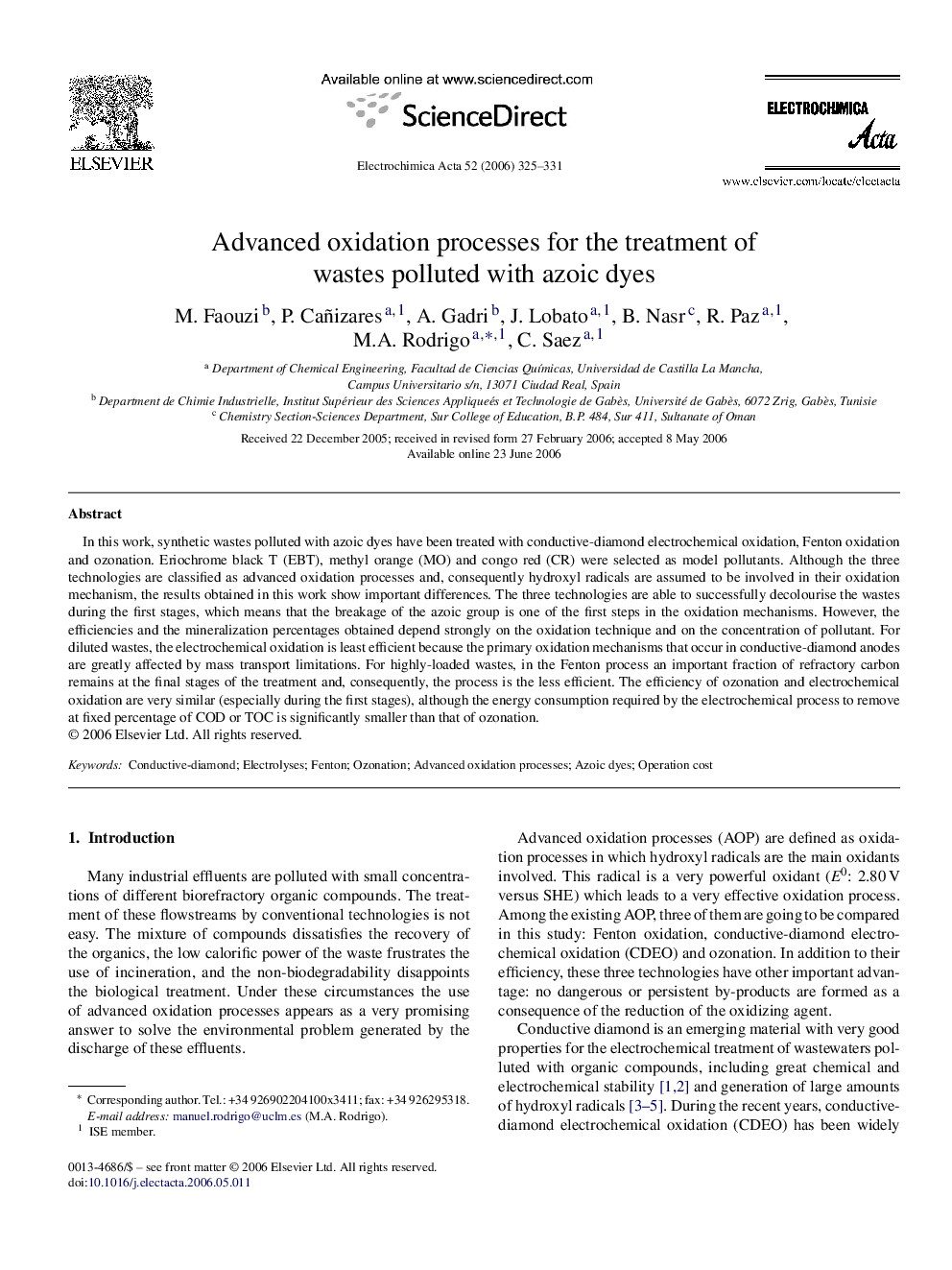| کد مقاله | کد نشریه | سال انتشار | مقاله انگلیسی | نسخه تمام متن |
|---|---|---|---|---|
| 194541 | 459794 | 2006 | 7 صفحه PDF | دانلود رایگان |

In this work, synthetic wastes polluted with azoic dyes have been treated with conductive-diamond electrochemical oxidation, Fenton oxidation and ozonation. Eriochrome black T (EBT), methyl orange (MO) and congo red (CR) were selected as model pollutants. Although the three technologies are classified as advanced oxidation processes and, consequently hydroxyl radicals are assumed to be involved in their oxidation mechanism, the results obtained in this work show important differences. The three technologies are able to successfully decolourise the wastes during the first stages, which means that the breakage of the azoic group is one of the first steps in the oxidation mechanisms. However, the efficiencies and the mineralization percentages obtained depend strongly on the oxidation technique and on the concentration of pollutant. For diluted wastes, the electrochemical oxidation is least efficient because the primary oxidation mechanisms that occur in conductive-diamond anodes are greatly affected by mass transport limitations. For highly-loaded wastes, in the Fenton process an important fraction of refractory carbon remains at the final stages of the treatment and, consequently, the process is the less efficient. The efficiency of ozonation and electrochemical oxidation are very similar (especially during the first stages), although the energy consumption required by the electrochemical process to remove at fixed percentage of COD or TOC is significantly smaller than that of ozonation.
Journal: Electrochimica Acta - Volume 52, Issue 1, 5 October 2006, Pages 325–331